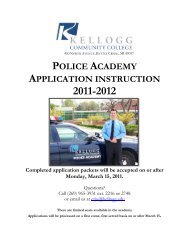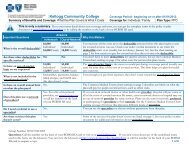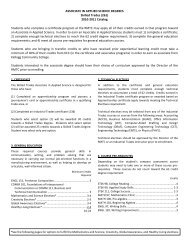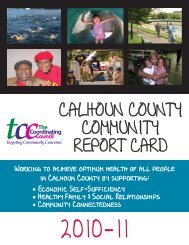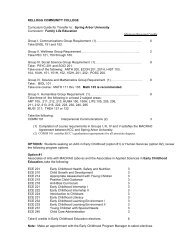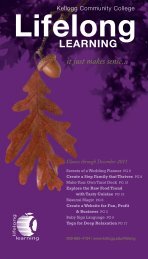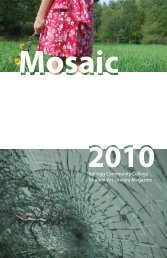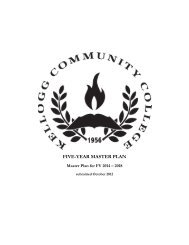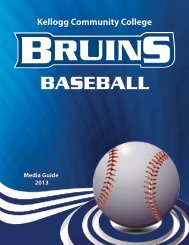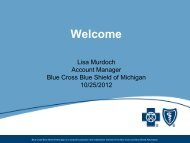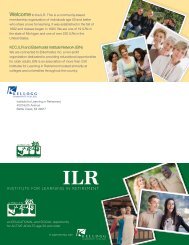Kellogg community college nursing student handbook
Kellogg community college nursing student handbook
Kellogg community college nursing student handbook
Create successful ePaper yourself
Turn your PDF publications into a flip-book with our unique Google optimized e-Paper software.
3) Auscultates heart for 1 minute over 5 th intercostal space at “point of<br />
maximum impulse” (PMI) and reports rate and rhythm (verification<br />
w/instructor)<br />
4) Identifies normal S1 and S2 and reports if extra or abnormal heart sounds<br />
are<br />
heard and location of murmur (over apex or base)<br />
Abdomen:<br />
1) Inquires about any tenderness<br />
2) Assesses skin characteristics<br />
3) Assesses contour & symmetry checked from 2 positions (round, flat,<br />
distended)<br />
4) Determines if umbilicus present or absent<br />
5) Auscultates bowel sounds in all 4 quadrants, starts RLQ (listens over tender<br />
areas<br />
last) and describes bowel sounds as hypoactive, hyperactive, active, or<br />
absent<br />
6) Asks client to flex at the knees (to relax abdominal muscles) then lightly<br />
palpates in all 4 quadrants—palpating tender areas last<br />
Lower Extremities:<br />
1) Assesses skin characteristics and temperature<br />
2) Hair distribution of lower extremities<br />
3) Legs and feet (size and symmetry)<br />
4) Muscle strength (leg lifts, foot presses and pulls)<br />
5) Demonstrates ROM (one leg and foot)<br />
6) Palpates for pretibial and pedal edema and assesses using edema scale<br />
7) Palpates posterior tibial and dorsalis pedis pulses (present or absent,<br />
thready<br />
or bounding, regular or irregular, equal bilaterally or not)<br />
8) Assesses bilateral toenail capillary refill (less than or greater than 3<br />
seconds)<br />
PHYSICAL ASSESSMENT RUBRIC<br />
Prepares for Examination:<br />
Gathers and cleans equipment<br />
Performs hand hygiene<br />
Verbalizes would check health record for client information and allergies<br />
prior to beginning exam<br />
Provides for privacy<br />
COMMENTS:<br />
MET/NOT MET<br />
Establishes Interpersonal Communication:<br />
Introduces self and identifies client<br />
Adequately explains what is being done, while limiting small talk<br />
Inquires about comfort, immediate personal needs, reminds to void<br />
Demonstrates appropriate facial expression, establishes eye contact<br />
Gives client opportunity to ask questions before beginning<br />
Demonstrates confidence, empathy, and gentle manner<br />
COMMENTS:<br />
Page 27 of 46



